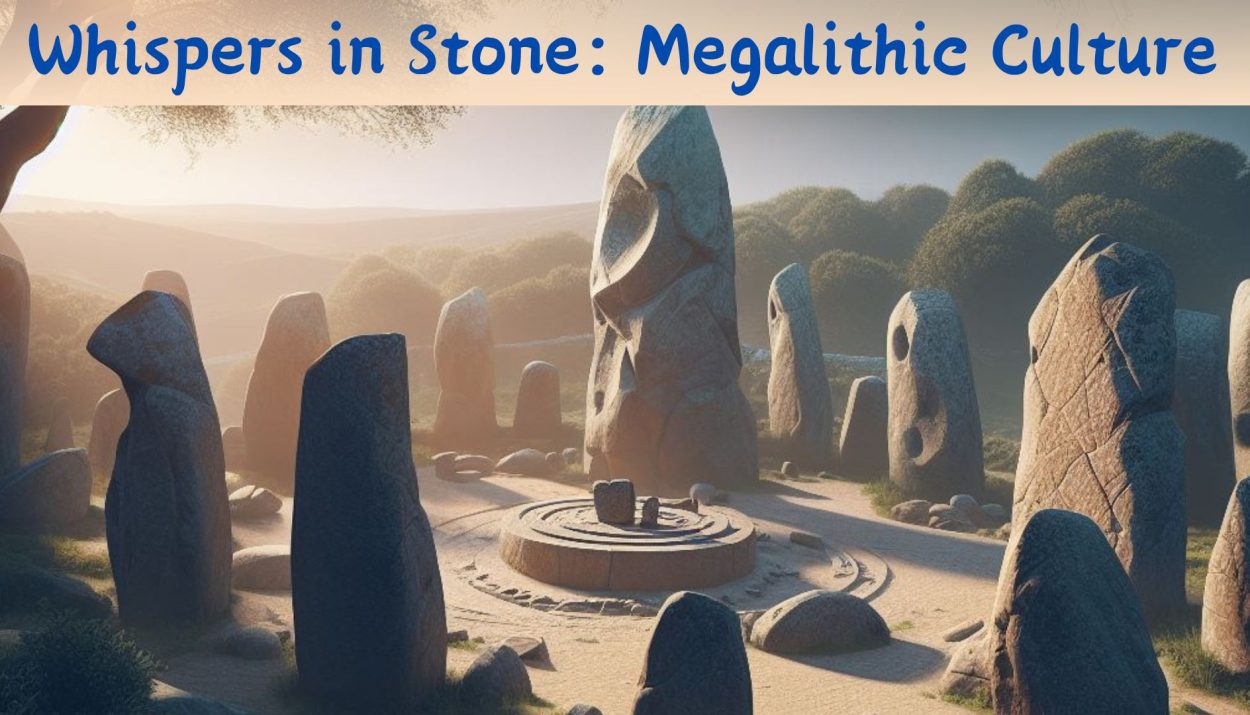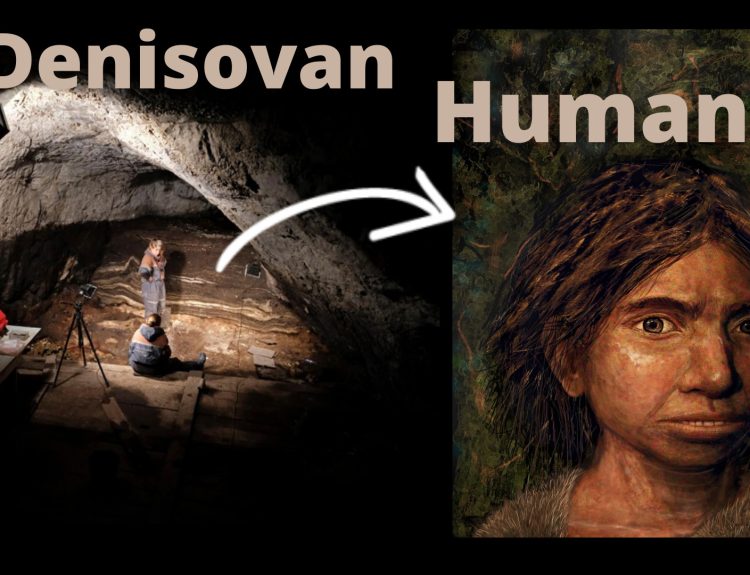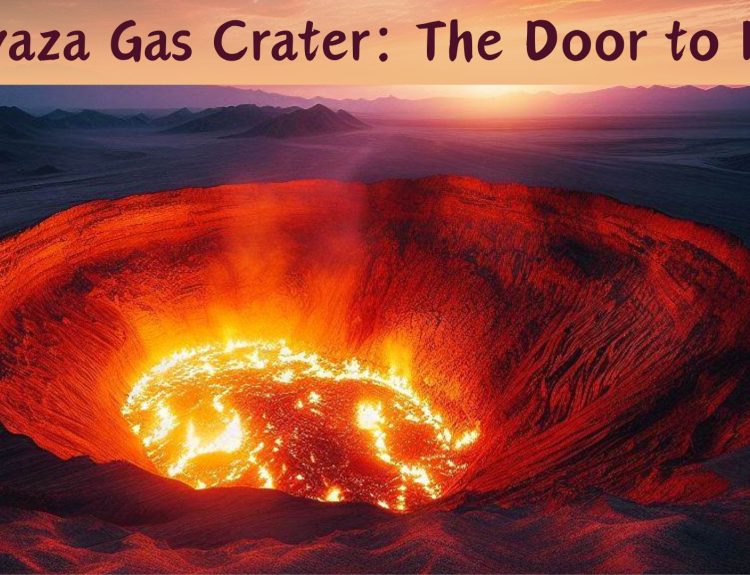Megalithic culture, marked by the creation of monumental stone structures, is a testament to ancient civilisations’ ingenuity and craftsmanship. Spread across diverse regions and time periods, megalithic monuments continue to captivate archaeologists, historians, and curious minds alike. “Whispers in Stone: Megalithic Culture” unfolds the captivating tale of ancient civilizations through the enduring mysteries of megalithic structures.
According to V. Gordon Childe, the term ‘Megalith’ is derived from two Greek words: ‘mega,’ meaning large, and ‘lithos,’ meaning stone. Antiquaries originally introduced this term to describe an easily definable class of monuments in western and northern Europe, consisting of huge, undressed stones. Megalithic cultures emerged independently in various parts of the world, including Europe, Asia, Africa, and the Americas, during prehistoric periods. Dating back to the Neolithic and Bronze Ages, these cultures left an indelible mark on the landscape with their awe-inspiring stone constructions.
Key Features of Megalithic Monuments
Stone Circles: One of the most iconic features of megalithic culture is the construction of stone circles. The stones may be arranged in a circle, take on an elliptical form, or, less commonly, be positioned as four stones laid along an arc of a circle. The specific arrangement type varies from one region to another.
Famous examples include Stonehenge in England, the Ring of Brodgar in Scotland, and the Megalithic Temples of Malta. These circles often served astronomical, religious, or ceremonial purposes, with precise alignments to celestial events. Stone circles, abundant in India, serve as poignant memorials for the departed, underlining their prevalence and significance in the Indian landscape.
Dolmens: Resembling tables, dolmens are structures consisting of large, flat stones placed horizontally atop upright stones, forming a chamber or tomb-like structure. Dolmens can be found across regions such as the Middle East, North Africa, Asia (with a notable concentration in Korea), and India. These constructions served various purposes, functioning as burial chambers or sacred sites for ancient cult worship.

Menhirs: Menhirs are single, upright standing stones, sometimes arranged in rows or clusters. Extensively scattered across various continents, including Europe, Africa, and Asia, these upright monolithic stones come in diverse heights. The purpose of menhirs remains a subject of debate, with theories ranging from religious rituals to markers for celestial events.

Cairn: A cairn is a constructed mound of stones, typically taking on a conical shape. Commonly found in highland areas, on moors, mountain peaks, or in proximity to waterways, these formations serve various purposes. In contemporary settings, cairns are frequently built as landmarks. In ancient times, they served as sepulchral monuments or were utilized for practical and astronomical purposes.

Cist: A cist serves as a containment for deceased bodies and could be linked to other structures. It was not unusual to discover multiple cists situated closely within a cairn or barrow. The identification of ornaments within an excavated cist signifies the wealth or prominence of the individual interred within.

Megalithic Tombs: Megalithic cultures constructed elaborate burial sites, such as passage tombs and long barrows. Newgrange in Ireland and Maeshowe in Orkney are notable examples of passage tombs with intricate designs that align with solstices, suggesting a deep understanding of celestial cycles.
Cultural Significance and Theories
Religious and Ritualistic Practices: Many researchers believe that megalithic structures had religious or ritualistic significance, serving as places for communal gatherings, ceremonies, and burial rituals. The alignment of these structures with celestial events indicates a possible connection between megaliths and ancient belief systems.
Advanced Astronomical Knowledge: The precise alignment of megalithic structures with celestial events, such as solstices and equinoxes, suggests that these ancient cultures possessed a sophisticated understanding of astronomy. Some theorize that megaliths served as calendars or observatories to track celestial phenomena.
Symbolism and Community Identity: Megalithic monuments may have served as symbols of community identity and cultural pride. The effort and collaboration required for their construction could have fostered a sense of unity among ancient societies.
Enduring Mysteries
Delving into the realm of megalithic culture, researchers are confronted with the resilience of unanswered questions that have persisted despite the strides made in archaeological understanding. The very methods employed by ancient civilizations to transport and arrange massive stones, often spanning great distances, remain a puzzle. The significance of precise alignments with celestial bodies or natural landmarks, and the cultural narratives that propelled communities to erect such imposing structures, continue to resist complete decipherment.
These enduring mysteries not only emphasize the gaps in our comprehension of megalithic cultures but also serve as an alluring invitation to explore further. The enigmatic allure of these ancient constructions, whether they be stone circles, dolmens, or menhirs, beckons contemporary minds to unravel the secrets embedded in the very fabric of these silent witnesses to bygone eras. As the quest for understanding persists, the whispers in stone echo through time, inviting us to unlock the stories concealed within these monumental relics of our shared human heritage.
Conclusion
Megalithic culture stands as a remarkable chapter in the human story, showcasing the creativity and technical prowess of ancient civilizations. As ongoing archaeological discoveries shed light on these enigmatic structures, the allure of megalithic culture persists, inviting us to marvel at the mysteries left behind by our ancestors and encouraging continued exploration into the depths of our shared history.







